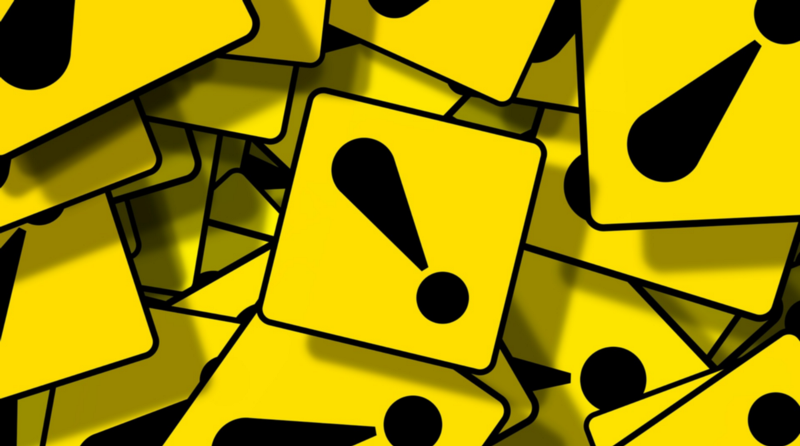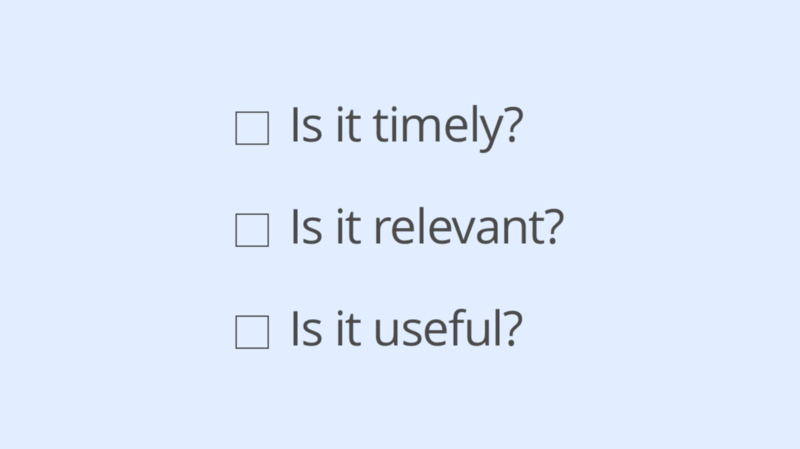How did you get so sick with your alerts
- Transfer
Alone against the industry.

About 30 alerts are sent to my phone every day. 30 times a day, my phone vibrates and rings, begging to pay attention to it. Vibrates when I cook breakfast. Vibrates when I'm late for a meeting. It vibrates even when I try to redeem my child.
I look at my phone and see something like this:

Facebook: John, do you know Ben Glenn?
Yes, I know Ben. Great guy. But honestly, I don’t need to add him as a friend. We talked in the office three or four times on the strength, I do not consider it necessary to share our personal life with him. Also, it's 9:35 a.m. I'm late for work, and the last thing I'm thinking about right now is new friends on Facebook.
To clear.
We are more important than metrics.
Alerts were not always spam. I remember the times when alerts came on time, were relevant and useful.
The Weather app informed me of impending rain. My sports app announced the start of the New York Giants game. I really wanted to know about this and I really liked these alerts.
But over time, the rules of the game have changed. Companies are obsessed with Daily Active Users, Adoption Rate, and User Retention. At one point, people just became numbers on the board.
We need to remind companies that we are not just numbers. We are real people with busy lives. We don’t need to use the application every day to enjoy it, so we don’t need to lure us with spam alerts.
Let's be more sensitive
I am writing this article in order to encourage developers to be sensitive when it comes to alerts. I address this appeal to both myself and the company in which I work. It seems to me that our industry has become very nonchalant about alerts.
It's not just about Facebook. It's about Google, Amazon, Twitter, Yelp, and many other apps we love. I certainly didn’t receive so many alerts a few days ago. Applications have become more aggressive, and it seems to me that alerts will be more and more like spam if we do nothing.
Every inappropriate alert harms your brand. Think about whether you really want to be known as a company that annoys everyone with spam in order to increase your visit statistics? Our users deserve the best.

Look at me! Look at me! LOOK AT ME! Having fun is fun, you just need to know how.
Alerts are interrupts
Perhaps for internal use, alerts should be renamed “distractions." Maybe with this approach, we will be more careful when choosing what to notify our users about.
Would you interrupt me from my affairs to let me know that it will rain soon? No problem.
Would you interrupt me to say that someone shared an article on LinkedIn?
Probably not.
Nevertheless, similar messages come to me every day:

Sussu Laaxsonen shared: “When good girls decide what’s enough with them, they study, kick their asses and win.”
I think Sousse is a great person, but why does LinkedIn think I want to read this? I was in a meeting when it came to me. Does LinkedIn really expect me to drop everything to read this article?
Why not just turn them off?
You might be wondering why I just won’t turn off my alerts. That's why.
1. There is simply no easy way to unsubscribe.
It’s easy to unsubscribe from email newsletters. You just need to find the right button somewhere at the end of the letter. By the way, the ability to unsubscribe is the law.
Unfortunately, the rejection of alerts from the application is not regulated in any way. Unsubscribing is
far more complicated than unsubscribing.
2. It's hard to find the right settings.
I don’t know about the iPhone, but it’s often
impossible to find the notification settings on my Android .
For example, how many Android users know how to set up alerts in the
Facebook app ? Finding these settings is harder than hidden coins in Mario.
After some time, I still found the necessary settings, but I could not turn off the alerts “Do you know this person?”
3. I should not disable them.
Even if disabling alerts would be intuitive, I should not disable anything. Useless alerts should be turned off by default.
Let users turn them on themselves if they need them. Use
them inside the application. Do not think that everyone needs absolutely all alerts.

What setting to disable?
When do you need alerts?
Given all of the above, I definitely see the value of some alerts. When
executed correctly, alerts can be incredibly helpful and charming.
When working on new alerts, I have three criteria for evaluating their usefulness:

1. Is it timely?
Try to send alerts only when they are really needed. If you send it too soon or too late, it will only once again get the user crazy.
2. Is this appropriate?
Send alerts only when you are completely sure that they will suit your users. If the possibility of their interest is small, do not take chances. Look for other ways to convey information - in the product itself or via email.
3. Is it useful?
Try to send alerts that can really help the user. A good way to test their usefulness is to ask yourself, would you say “thank you” for such an alert?
Tell your friends
The importance of alerts is hard to underestimate. This is perhaps the main way to tell the user something. These two or three lines of text may be the most important text in your application. I hope that with this text I was able to encourage developers to use this text more responsibly.
The publication is supported by the Edison company , which is developing an application for the design of prefabricated houses , as well as writing software for dispatching heavy vehicles on a coal mine .
